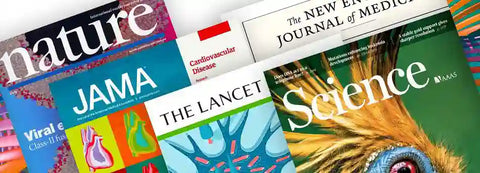Tips on Using Latin Abbreviations for Citations & Cross References
Although many of the Latin abbreviations once frequent in scholarly writing for referring to sources and other information are, in the twenty-first century, used with increasing rarity, some presses and journals still request or allow their use, and Latin still remains, among certain intellectual groups, something of a universal language. However, rarity of use in English scholarship has shrouded the meanings of many Latin abbreviations with more obscurity and mystery than ever, and readers are confused by such terms more often than anyone would wish to admit. Labelling them outdated and eliminating their use altogether can hardly be the answer given that they appear in older texts in several fields of study. Students and researchers will encounter them, so the solution, as is so often the case, lies in understanding, and the following brief notes on what a few of the most confusing of these abbreviations actually mean and how to use them well or, alternatively, avoid their use when writing in the English language may prove helpful to scholarly readers as well as academic and scientific writers.
• ‘art. cit.’ abbreviates the Latin phrase ‘articulo citato,’ which means ‘in the cited article.’ This abbreviation is used in references after an author’s name to refer to the title of an article that has already been cited in a document. Its use is infrequent now and some guidelines will ask that it be avoided, so a shortened version of the article title is usually preferable. When used, it can appear in either roman or italic font.
• ‘loc. cit.’ abbreviates the Latin phrase ‘loco citato,’ which means ‘in the cited place.’ Used for referencing in either roman or italic font, this abbreviation represents a specific location within a work, so its function is extremely limited. It is also often misunderstood and used in inappropriate ways. Although it can prevent the repetition of long and complex location references, this abbreviation must be used with absolute precision to be effective. Therefore, unless limited space is a serious issue and repeating the full information a lengthy matter, it is best to avoid this abbreviation.
• ‘op. cit.’ abbreviates ‘opere citato,’ which means ‘in the cited work.’ It is used in references after an author’s name to refer to the title of an already cited work, but like ‘art. cit.,’ this abbreviation is now little used, and some guidelines will ask that it be avoided, so a shortened version of the title is a better choice. When used, the abbreviation can appear in either roman or italic font.
• ‘inf.’ abbreviates the Latin word ‘infra,’ which means ‘below.’ This abbreviation appears in either roman or italic font and is used primarily for cross references within a document, usually in parentheses. In some instances the full Latin word is used instead, but a clearer choice in many cases is to use the English word ‘below.’
• ‘sup.’ abbreviates the Latin word ‘supra,’ which means ‘above.’ The abbreviation is used primarily for cross references, as is the full word in some instances, but it is often best to use the English word ‘above’ instead. The abbreviation ‘ut sup.’ is closely related. It abbreviates the Latin phrase ‘ut supra,’ which means ‘as above,’ and that English phrase would be a clearer choice for most readers. Both abbreviations can appear in either roman or italic font, and note that there is no full stop after ‘ut’ in the second because it is not an abbreviation, but the complete Latin word for ‘as.’
Why Our Editing and Proofreading Services?
At Proof-Reading-Service.com we offer the highest quality journal article editing, dissertation proofreading and online proofreading services via our large and extremely dedicated team of academic and scientific professionals. All of our proofreaders are native speakers of English who have earned their own postgraduate degrees, and their areas of specialisation cover such a wide range of disciplines that we are able to help our international clientele with research editing to improve and perfect all kinds of academic manuscripts for successful publication. Many of the carefully trained members of our manuscript editing and proofreading team work predominantly on articles intended for publication in scholarly journals, applying painstaking journal editing standards to ensure that the references and formatting used in each paper are in conformity with the journal’s instructions for authors and to correct any grammar, spelling, punctuation or simple typing errors. In this way, we enable our clients to report their research in the clear and accurate ways required to impress acquisitions proofreaders and achieve publication.
Our scientific proofreading services for the authors of a wide variety of scientific journal papers are especially popular, but we also offer manuscript proofreading services and have the experience and expertise to proofread and edit manuscripts in all scholarly disciplines, as well as beyond them. We have team members who specialise in medical proofreading services, and some of our experts dedicate their time exclusively to dissertation proofreading and manuscript proofreading, offering academics the opportunity to improve their use of formatting and language through the most exacting PhD thesis editing and journal article proofreading practices. Whether you are preparing a conference paper for presentation, polishing a progress report to share with colleagues, or facing the daunting task of editing and perfecting any kind of scholarly document for publication, a qualified member of our professional team can provide invaluable assistance and give you greater confidence in your written work.
If you are in the process of preparing an article for an academic or scientific journal, or planning one for the near future, you may well be interested in a new book, Guide to Journal Publication, which is available on our Tips and Advice on Publishing Research in Journals website.








